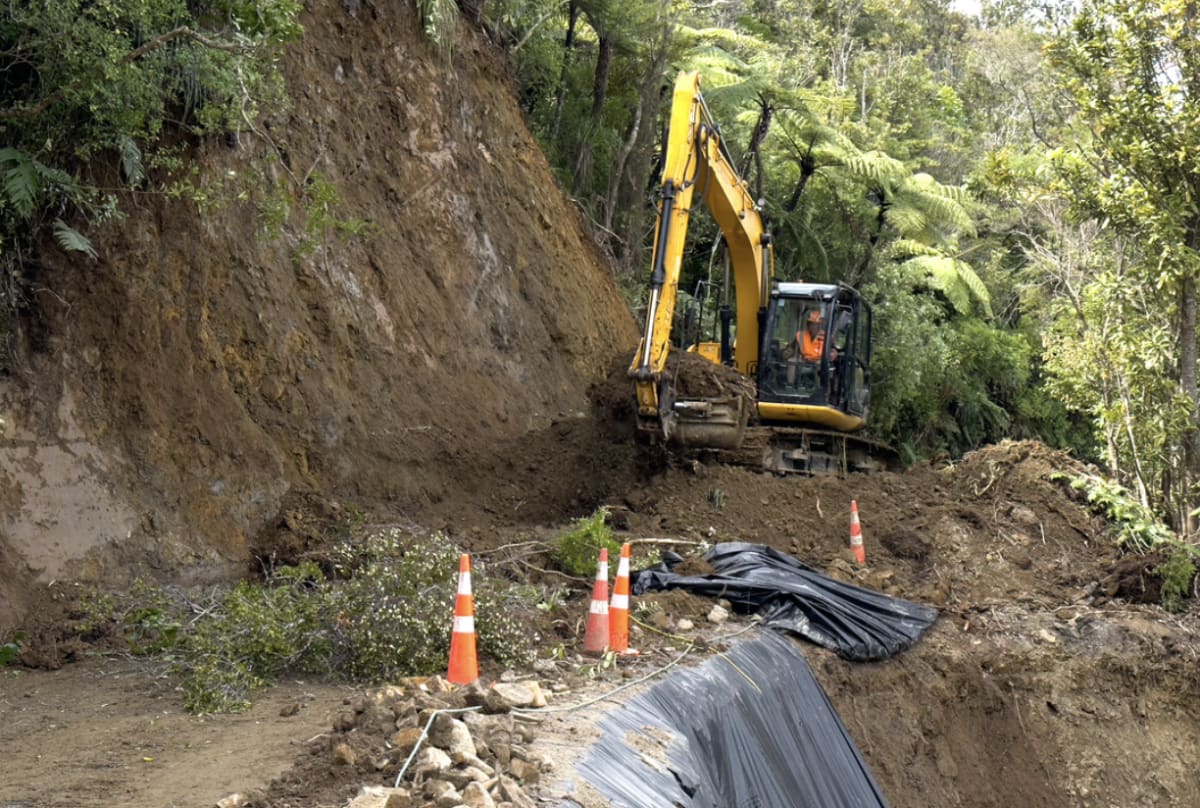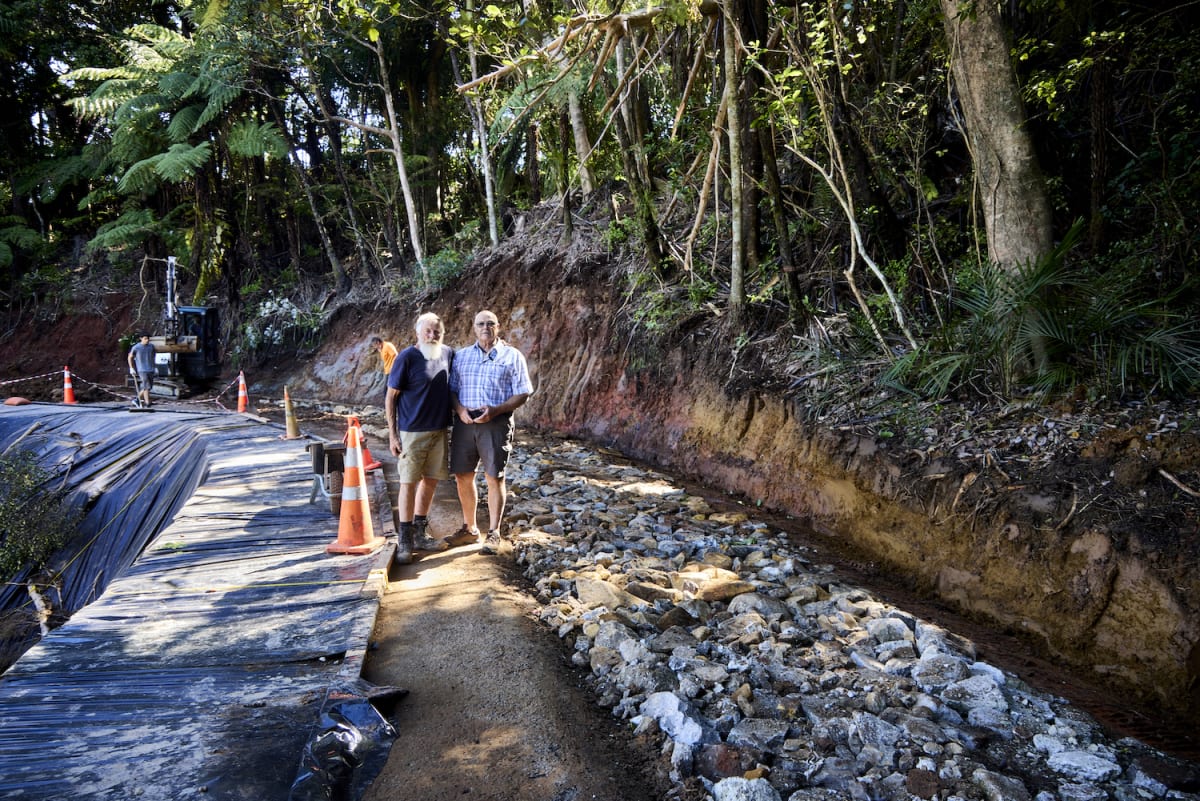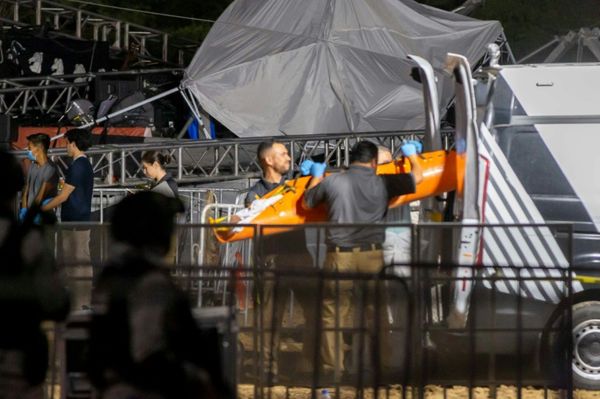
Auckland Transport’s full plate after Cyclone Gabrielle saw a small group of West Coast locals launching some unofficial roadworks
When the winds began to blow and the earth began to move at the end of last summer, the small West Auckland community of Karekare found itself cut off in more ways than one.
Already only reached by a pair of narrow roads that wind their way down through the kauri-dotted thickets and bluffs on the far side of the Waitakere Ranges, it never would have taken much for the exits to be blocked.
READ MORE:
* Cyclone Gabrielle's path of destruction in seven charts
* The Detail: What made this storm unique?
But when Cyclone Gabrielle caused over 15 slips across Karekare Road and Lone Kauri Road, the community of several hundred found itself in a paradoxical state – at once a part of the country’s largest city, and one of the hardest-to-access spots in the country.
And while Auckland Transport was wrangling contractors to start reconnecting the battered roading network, the people of Karekare began to worry that if work didn’t begin on the roads soon, locals would begin to migrate over the mountains and the community itself would begin to flicker out of existence.
Downed trees and eaten-away sections of the road prevented Auckland Transport contractors from getting down Lone Kauri Road with their machines, suggesting a long road to recovery pushed along by a transport agency that suddenly had a region-wide emergency on its plate.
So Karekare helped itself.

Auckland Transport chief engineer Murray Burt said the highly-motivated community “effectively dug themselves out” of a “pretty exceptional circumstance”.
A group of locals led by Ezra Clark, owner of the company Lone Kauri Construction, worked for about seven weeks on the road despite a lack of an Auckland Transport contract to make sure the community remained passable.
Karel Witten-Hannah is a Karekare local who helped out on the work. He said the community was afraid it would be put at the bottom of the list when it came to the big repair jobs.
“People at Karekare had the very real fear that we'd be the last cab off the rank and the council and AT would say to us we're too busy with those other places, sorry,” Witten-Hannah said. “We thought they may demand we evacuate, and people out here have livestock and horses and chooks and so on – they didn't want to do that.”
He said six or seven workers formed the base of a larger group that cleared slips and widened the road, while a local catering business sent fancy sandwiches up the road to keep them going.
“It went on for about seven or eight weeks and then people had to get back to their day jobs,” Witten-Hannah said. “But in that time we made a fairly substantial improvement to the road. Then AT got Fulton Hogan to come in and chipseal over what we'd done, basically. And many people would say that the road is better than it's ever been.”
Despite then not being sub-contractors to Ventia – the construction company tasked with much of Auckland Transport’s infrastructure work on the West Coast – Lone Kauri Construction was paid just over $200,000 for the work after a careful assessment was made.
Burt said the roadwork was of good quality – perhaps in part because it was done by people who rely on the road for their livelihoods.
“They got it to a place where you could get a vehicle through on a solid running service and were managing the waterflow as well,” he said.
Since then, Fulton Hogan have been building retaining walls and soil nailing – inserting reinforcing bars into the slope to keep it in place.
Burt said while there’s still a bit more work to go, the road would soon be back to how it was before the storms.
But he doesn’t exactly encourage communities to roll up their sleeves and get their hands dirty fixing Auckland Transport assets without consulting the agency.
“It’s maybe not something we'd encourage everyone to do,” he said. “I guess the learnings are it’s important to know clear roles and responsibilities, where boundaries start and stop and who's responsible for what.”
Although Auckland Transport has said Karekare’s DIY approach was in the end a good thing, Newsroom understands there were some moments of tension in the beginning.
Locals in Karekare were angry the work wasn’t being done sooner, while the unofficial subcontractors were asked to stop working by Auckland Transport in early April. Burt admits Auckland Transport’s contractors, trying to get down the road to where the problem was, might not have been the best at communicating with the community.
But he was euphemistic in his retelling of the relationship between his agency and the Karekare locals:
“There's different personalities involved. I guess you could say there were some misunderstandings early on. The guy that runs [Lone Kauri Construction] is a straight shooting sort of person, tells it how it is, and they had been motivated and got in there.”
He said the election of local architect Richard Priest as a kind of go-between between parties helped iron out their differences and for them to come to a place of understanding.
It’s a situation that required unusual flexibility from a transport authority.
“Normally no one should work on the road unless they have authorisation and a contract in place,” Burt said. “However in an unprecedented emergency which this was, you need to move quickly, and they were in a position to move quickly – we understood that and were able to retrospectively put in place the approvals that would have been required.”
It highlights the strange nature of public infrastructure, especially crucial pieces like the sole connecting tissue between small communities and the rest of the country.
Although the roads were Auckland Transport assets, the agency had to acquiesce to the local community who actually relies on those assets.
Waitākere councillor Ken Turner said the situation speaks to the need for more locally-based procurement processes.
“The most important thing I’d want to see out of this is a return to local contractors being given the job of maintaining our rural and semi-rural road networks,” he said.
He said the supercity relied on mega-contracts to the likes of Ventia, which had little connection to the areas - or pressure to get things right from the community.
“When we had local contractors in the area, the peer pressure to do a good job was enormous,” he said. “What I'm saying is the centralisation comes with a focus on big is beautiful. Council makes these contracts because they don't want to have to work with all of these entities like they used to.”

Burt said aspects of localised procurement were already in place, with head contractors like Ventia able to use smaller local subcontractors.
He said Auckland Transport was already “encouraging contractors to use local labour and people from local communities so it creates work in the communities where the work is happening. We encourage all our tier-one contractors to do that… it creates a sense of local ownership in the work and the resources go back to the community.”
But Turner said the centralisation of contracting into five large maintenance areas hasn’t brought any efficiencies.
He recently took a leaf from Karekare’s book and took a digger to a damaged patch of road in his own local community of Huia, writing on social media:
“Sixty years ago I use to watch out for cars as my dad cleared the pipes under this ford. Not much has changed except our rates have gone up by thousands of percent and council jack-hammered down the concrete groyne the community built decades ago to protect the foreshore from storm swells that cause this.”
It’s a sentiment Auckland Transport officials might disagree with behind closed doors, but for the people of Karekare in the uncertain days after Cyclone Gabrielle, it certainly proved true that local labour was the best way to reconnect their town to the rest of the world.





